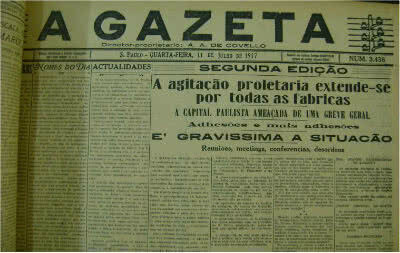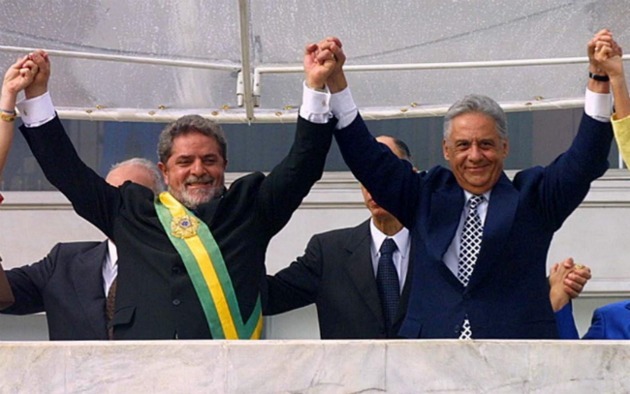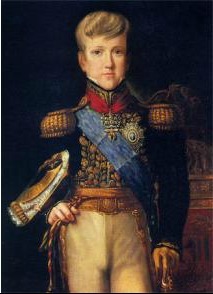O Berlin Wall it was built on August 13, 1961 and demolished 28 years later, on November 9, 1989.
The wall divided the city of Berlin in two, in order to prevent the emigration of the population from East Berlin to the West side.
In this way, between 1961 and 1989, the city was divided into two distinct zones: West Berlin and East Berlin.
Origin of the Berlin Wall
To understand the existence of the Berlin Wall we need to remember the context of the Cold War (1945-1991). This was a geopolitical dispute that started at the end of World War II (1939-1945) between the United States (leading the capitalist bloc) and the Union of Soviet Socialist Republics (leading the socialist bloc).
At the end of World War II, the main winners – England, the United States, France and the Soviet Union – occupied defeated Germany. In the city of Berlin this situation was seen more clearly, as the three nations also appropriated Berlin.
The first three countries had the same political-economic alignment, that is, capitalism. Thus, they created the “tripartite” zone, something that Stalin did not like, as it threatened the territory occupied by the USSR.
In 1948, Stalin decrees the "Block of Berlin", a "peaceful" siege that prevented the arrival of supplies to West Germany, by land and rivers. The response of the United States and England was to use planes to guarantee supplies and transport.
The siege was broken on May 13, 1949 and the Allies remained in Berlin. Likewise, on the 23rd of the same month, they created the Federal Republic of Germany (West Germany), preventing Stalin from taking over all German territory.
For its part, the USSR decrees the creation of the German Democratic Republic (East Germany) on October 7, 1949.
Berlin and the Wall
If Germany suffered all from this division, for the city of Berlin it was worse. The former capital was in the middle of Soviet-occupied territory and was cut – literally – in two.

The Middle Wall was about 155 km long, crossed 24 km of rivers and 30 km of woods. It interrupted the route of eight commuter train lines, four subway lines, and cut 193 streets and avenues.
It was defended by alarm bars, electric fences and barbed wire, dotted with more than 300 watchtowers, patrolled by guard dogs and well-armed soldiers. These, had orders to shoot to kill, on anyone who tried to cross it.
Some buildings directly suffered the consequences of the construction, such as the Church of Reconciliation, from 1894, which was restricted to residents of the communist side. In the 1980s, with the objective of creating an area next to the wall (which became known as the death zone), the GDR government opted for its demolition in 1985.
Another torn place was the Sophien Cemetery, which became accessible only to East Berliners. Its area was cut and several bodies were not removed properly.
However, one street became the symbol of this division: the "Bernauer Strasse" (Bernauer street). With 1.4 km long, the Wall occupied almost its entire area and the adjacent buildings had their windows bricked up.
There, the first mortal victim who tried to escape from East Berlin took place, on August 22, 1961, when a resident jumped from the third floor and died in the fall.
Escapes through the Berlin Wall
An estimated 118 people died at the risk of crossing the Wall. Another 112 were shot or tumbled from a height, but survived and were arrested together with about 70,000 people accused of treason for trying to flee the German Democratic Republic.
However, 5,075 people managed to overcome all these barriers and reach West Germany.
Building the Berlin Wall

Escapes from the east to the west were commonplace before 1960 and around 2,000 people escaped daily in search of better living conditions on the capitalist side.
In 1961, in order to prevent further escapes, Walter Ulbricht (1893-1973), General Secretary of the Communist Party of German Democratic Republic decrees a new blockade of the free traffic of the armed forces on both sides of the city of Berlin.
Thus, on August 13, 1961, the construction of a large wall began, which would become the ultimate symbol of the Cold War.
On a daily basis, thousands of families were affected, as many relatives and friends were on opposite sides and unable to meet.
On October 27, 1961, due to an incident, US tanks even faced Soviet tanks at the CheckPoint Charlie border post. Fortunately, no one fired and the situation was resolved diplomatically.
Fall of the Berlin Wall
The history of the Berlin Wall runs parallel to the Cold War.
In 1963, US President John Kennedy, visiting Berlin, gives a memorable speech in solidarity with West Berlin, where he declares himself to be a Berliner. However, the two Germanys would only renew diplomatic ties ten years later, at the same time as USSR and the United States tried to ease the tension of the Cold War.
Both the USSR and its communist bloc partners were going through an economic and political crisis. Therefore, they used opening strategies to oxygenate their regimens.
In 1987 it was US President Ronald Reagan's turn to challenge Mikhail Gorbachev to tear down the Wall. Meanwhile, Gorbachev was preparing the Soviet Union's gradual opening to the world.
At the same time, there are several demonstrations for more freedom on both sides of the German border. In a statement broadcast on television, East German politicians announce the opening of the border.
In the Eastern European bloc itself, several countries carried out timid reforms. In 1989, for example, the government of Hungary opened its borders, allowing the Germans to reach West Germany en masse.
As no concrete date was given, a mob of Berliners came to the Wall on November 9, 1989, and began to tear it down with their own tools. Despite all this effort, the Wall was only really destroyed by bulldozers.
To this day part of the Berlin Wall has been maintained in the German capital. Part of it became a mural of paintings for internationally renowned artists, while others serve as monuments so that this terrible construction will never be forgotten.
Finally, East Germany and West Germany unite on October 3, 1990, eleven months after the fall of the Berlin Wall.
We have more texts on this subject:
- Arms race
- Mikhail Gorbachev
Bibliographic references
Berlin Wall Figures and Facts in Deutsche Welle. Access: 25.06.2020
Documentary in Spanish: Los Anos del Muro. life in Berlin divided. Accessed: 06.25.2020.



